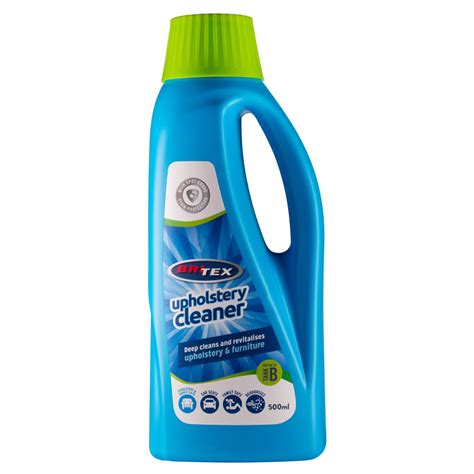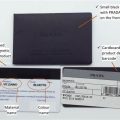The Ultimate Guide to Upholstery Cleaning Solutions
Keeping your furniture clean and fresh is essential for a comfortable and inviting home. Upholstery can accumulate dirt, dust, stains, and allergens over time, impacting its appearance and hygiene. Choosing the right upholstery cleaner can be overwhelming with numerous options available. This comprehensive guide will explore common questions about upholstery cleaning solutions, helping you make informed decisions to keep your furniture sparkling clean.
What are the best upholstery cleaners for different types of fabrics?
The effectiveness of an upholstery cleaner depends on the type of fabric your furniture is made of. Not all cleaners are suitable for all fabrics. It’s crucial to identify the fabric type before selecting a cleaning solution to avoid damage.
Here’s a breakdown of commonly used fabric types and suitable cleaning methods:
- Cotton: Cotton is a durable and absorbent fabric. It can be cleaned with mild detergent and water. Avoid harsh chemicals and abrasive cleaners.
- Wool: Wool is a natural fiber that is moisture-resistant and resilient. Use a specialized wool cleaner or a mild soap solution. Avoid harsh detergents and hot water.
- Silk: Silk is a delicate and luxurious fabric. Use a professional cleaner or a gentle silk cleaner specifically designed for this fabric. Avoid water and harsh chemicals.
- Leather: Leather is a durable and long-lasting material. Use a leather cleaner and conditioner specifically designed for upholstery. Avoid using soap or water, which can damage the leather.
- Microfiber: Microfiber is a synthetic fabric known for its durability and stain resistance. Use a specialized microfiber cleaner or a mild soap solution. Avoid harsh chemicals and bleach.
- Polyester: Polyester is a synthetic fabric that is stain-resistant and easy to clean. Use a mild detergent and water or a specialized upholstery cleaner designed for polyester fabrics.
Always test a cleaning solution on a hidden area of the upholstery before applying it to the entire piece. This helps ensure that the cleaner does not cause discoloration or damage.
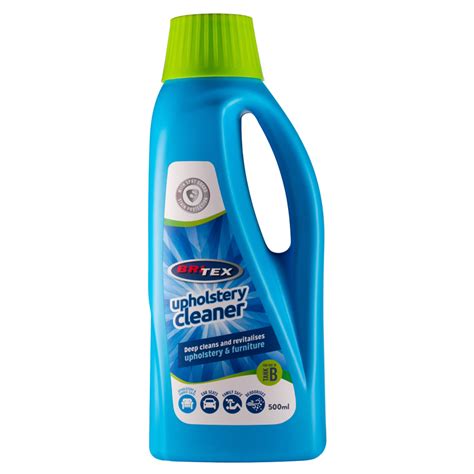
How do I remove stains from upholstery?
Stains can be a nuisance, but with the right approach, they can often be removed effectively.
Here are some steps to follow for stain removal:
- Blot the stain immediately: Avoid rubbing the stain as this can spread it further. Use a clean cloth or sponge to absorb as much of the stain as possible.
- Identify the stain type: Different stains require different cleaning methods. Some common stain types and their appropriate cleaning solutions are listed below:
- Apply the appropriate cleaning solution: Use a cleaning solution that is specifically designed for the type of stain. Avoid using harsh chemicals or bleach, which can damage the fabric.
- Test the cleaning solution: Before applying the cleaner to the entire stain, test it on a hidden area of the upholstery to ensure it doesn’t cause discoloration or damage.
- Gently clean the stain: Use a clean cloth or sponge to gently work the cleaner into the stain. Don’t rub vigorously, as this can damage the fabric.
- Rinse the area thoroughly: Once the stain has been removed, rinse the area with clean water or a solution of mild detergent and water.
- Dry the area completely: Use a clean cloth or towel to blot the area dry. Avoid using heat, as this can damage the fabric.
| Stain Type | Cleaning Solution |
|---|---|
| Coffee or Tea | Cold water, mild detergent, or a stain remover specifically designed for coffee or tea stains |
| Wine | White wine, club soda, or a stain remover specifically designed for wine stains |
| Blood | Cold water, hydrogen peroxide, or a stain remover specifically designed for blood stains |
| Grease or Oil | Dish soap, baking soda, or a stain remover specifically designed for grease or oil stains |
| Ink | Rubbing alcohol, hairspray, or a stain remover specifically designed for ink stains |
| Urine | White vinegar, enzymatic cleaner, or a stain remover specifically designed for urine stains |
What are the best DIY upholstery cleaners?
If you’re looking for cost-effective and natural cleaning solutions, there are several DIY upholstery cleaners you can make at home.
Here are some effective and safe DIY recipes:
- Baking Soda and Water: This simple solution is effective at removing dirt, dust, and odors. Mix a tablespoon of baking soda with a cup of warm water. Dip a clean cloth into the solution and gently wipe the upholstery.
- Vinegar and Water: Vinegar is a natural disinfectant and odor remover. Mix equal parts white vinegar and water in a spray bottle. Spray the solution onto the upholstery and wipe with a clean cloth. Rinse the area with clean water and dry completely.
- Dish Soap and Water: Dish soap can effectively remove dirt and grime from upholstery. Mix a few drops of dish soap with a cup of warm water. Dip a clean cloth into the solution and gently wipe the upholstery. Rinse the area with clean water and dry completely.
- Club Soda: Club soda is surprisingly effective at removing stains, especially those from wine, coffee, or tea. Pour a small amount of club soda onto the stain and gently blot with a clean cloth. Rinse the area with clean water and dry completely.
- Hydrogen Peroxide: Hydrogen peroxide is an effective disinfectant and stain remover. Mix a small amount of hydrogen peroxide with a cup of water. Dip a clean cloth into the solution and gently wipe the stain. Rinse the area with clean water and dry completely.
When using DIY cleaners, always test them on a hidden area of the upholstery first to ensure they don’t cause discoloration or damage.
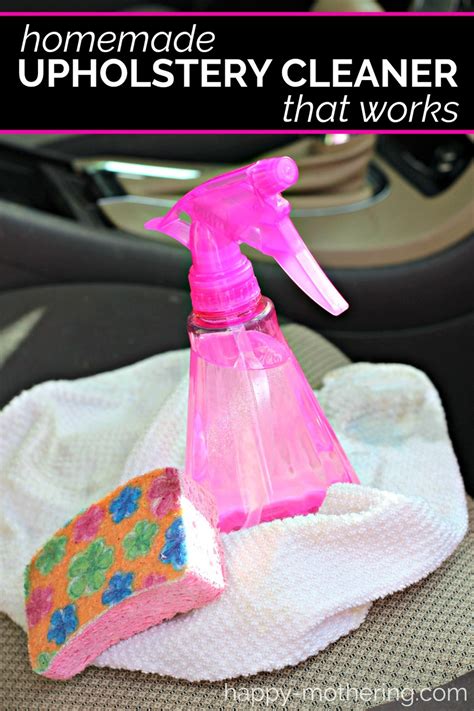
What are the best professional upholstery cleaning services?
For deep cleaning and professional results, hiring a professional upholstery cleaning service can be the best option. Professional cleaners have specialized equipment and expertise to remove deep-seated dirt, stains, and allergens. They can also offer fabric protection services to extend the life of your furniture.
Here are some things to consider when choosing a professional upholstery cleaning service:
- Experience and Expertise: Look for a service with a proven track record and experience in upholstery cleaning.
- Cleaning Methods: Inquire about the cleaning methods used. Hot water extraction, steam cleaning, and dry cleaning are common methods.
- Fabric Compatibility: Ensure the cleaning service is equipped to handle different fabric types.
- Customer Reviews and Testimonials: Check online reviews and testimonials from previous customers to gauge the service’s reputation.
- Pricing: Compare quotes from different services to find the best value for your budget.
What are the best upholstery cleaning products?
Choosing the right upholstery cleaning product is crucial for achieving the desired results.
Here are some of the top-rated upholstery cleaning products available:
- Rug Doctor Upholstery Cleaner: This product is effective at removing dirt, stains, and odors from upholstery. It’s easy to use and safe for most fabrics.
- Hoover PowerDash Pet Upholstery Cleaner: This product is designed to tackle pet stains and odors. It features a handheld design for easy cleaning of hard-to-reach areas.
- Bissell Little Green ProHeat Portable Carpet and Upholstery Cleaner: This product is a versatile option for both carpets and upholstery. It features a powerful cleaning action and a heated solution tank for effective stain removal.
- Folex Instant Stain Remover: This product is an effective stain remover for a variety of stains, including coffee, wine, and blood. It’s safe for most fabrics and leaves no residue.
- Resolve Carpet and Upholstery Cleaner: This product is a versatile cleaner for both carpets and upholstery. It’s effective at removing dirt, stains, and odors.
- Woolite Carpet and Upholstery Cleaner: This product is a gentle cleaner suitable for delicate fabrics. It’s effective at removing dirt, stains, and odors while protecting the fabric.
Always read and follow the product instructions carefully to ensure safe and effective use.
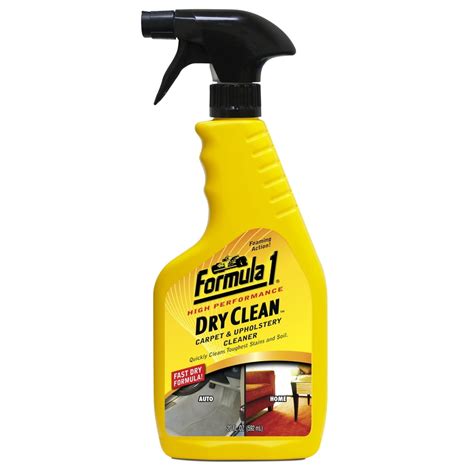
How often should I clean my upholstery?
The frequency of upholstery cleaning depends on factors like household traffic, pet ownership, and the type of fabric.
Here’s a general guideline:
- High-traffic areas: Clean upholstery in high-traffic areas, such as sofas and armchairs, every 3-6 months.
- Low-traffic areas: Clean upholstery in low-traffic areas, such as guest chairs or decorative pieces, once or twice a year.
- Pet owners: Clean upholstery more frequently if you have pets, especially if they shed or have accidents.
- Fabric type: Delicate fabrics, such as silk and velvet, may require more frequent cleaning than durable fabrics, such as cotton or microfiber.
Regular cleaning helps to maintain the appearance and hygiene of your upholstery and prevent the build-up of dirt, dust, and allergens.
Can I use a steam cleaner on upholstery?
Steam cleaners can be effective for upholstery cleaning, especially for removing dirt, dust mites, and allergens. However, not all fabrics are suitable for steam cleaning.
Here are some factors to consider:
- Fabric type: Avoid steam cleaning delicate fabrics, such as silk and velvet, as the heat can damage them. Cotton, microfiber, and wool are generally safe for steam cleaning.
- Steam cleaner settings: Use a steam cleaner with adjustable settings to control the heat and steam output. Use a lower setting for delicate fabrics.
- Test on a hidden area: Before steam cleaning the entire piece, test the steam cleaner on a hidden area of the upholstery to ensure it doesn’t cause discoloration or damage.
Always follow the manufacturer’s instructions for your steam cleaner and refer to the upholstery fabric care label for safe cleaning guidelines.
How do I prevent my upholstery from getting dirty?
Proactive measures can significantly reduce the frequency of cleaning and extend the life of your upholstery.
Here are some tips for preventing upholstery from getting dirty:
- Regular vacuuming: Vacuum the upholstery regularly to remove dust, dirt, and loose fibers.
- Use furniture covers: Consider using furniture covers to protect the upholstery from spills and stains.
- Train pets: If you have pets, train them not to jump on or scratch the furniture.
- Remove shoes at the door: Encourage guests to remove their shoes at the door to prevent dirt and grime from being tracked onto the upholstery.
- Use coasters and placemats: Use coasters and placemats to protect the upholstery from spills and stains.
- Regular cleaning: Regular spot cleaning and occasional deep cleaning can help to maintain the appearance and hygiene of your upholstery.
What is the best way to clean velvet upholstery?
Velvet is a luxurious and delicate fabric that requires special care. Using the wrong cleaning methods can damage the fabric and affect its appearance.
Here are some tips for cleaning velvet upholstery:
- Avoid water: Avoid getting velvet upholstery wet, as it can cause it to shrink or warp.
- Use a dry cleaning method: Dry cleaning is the safest method for cleaning velvet. Use a professional dry cleaning service or a dry cleaning solution specifically designed for velvet.
- Use a soft brush: To remove dust and debris, use a soft-bristled brush to gently brush the velvet in the direction of the nap.
- Test on a hidden area: Before applying any cleaning solution, test it on a hidden area of the upholstery to ensure it doesn’t cause discoloration or damage.
- Avoid rubbing: Avoid rubbing the velvet vigorously, as this can crush the fibers and make the fabric appear flattened.
If you have a stubborn stain, consider consulting a professional upholstery cleaner for specialized assistance.
Can I use a carpet cleaner on upholstery?
While carpet cleaners are often marketed for both carpets and upholstery, using them on upholstery can sometimes be risky.
Here are some things to consider:
- Fabric compatibility: Not all fabrics are suitable for carpet cleaners. Some fabrics may be damaged by the cleaning solution or the agitation from the machine.
- Cleaning solution: Ensure the cleaning solution is specifically designed for both carpets and upholstery. Some carpet cleaners contain harsh chemicals that can damage delicate fabrics.
- Machine settings: Adjust the machine settings to ensure the appropriate cleaning pressure and water flow for upholstery. Too much pressure or water can damage the fabric.
- Test on a hidden area: Before using a carpet cleaner on your upholstery, test it on a hidden area to ensure it doesn’t cause discoloration or damage.
If you’re unsure about using a carpet cleaner on your upholstery, it’s always best to consult a professional upholstery cleaning service.
What are the best upholstery cleaning tips?
Here are some general tips for cleaning upholstery:
- Read the fabric care label: Always read the fabric care label for specific cleaning instructions.
- Test cleaning solutions: Before applying any cleaning solution to the entire piece, test it on a hidden area to ensure it doesn’t cause discoloration or damage.
- Work in small sections: Clean the upholstery in small sections to ensure thorough cleaning and avoid over-wetting the fabric.
- Use a clean cloth or sponge: Use a clean cloth or sponge to apply cleaning solutions and avoid spreading dirt and grime.
- Rinse thoroughly: Rinse the cleaning solution thoroughly to remove any residue and prevent future staining.
- Dry completely: Dry the upholstery completely after cleaning to prevent mold and mildew growth.
- Use a fan or hairdryer: Use a fan or hairdryer on a low setting to help dry the upholstery faster.
Table Summarizing Information
| Topic | Information |
|---|---|
| Best Upholstery Cleaners for Different Fabrics | Choose cleaners specific to fabric types like cotton, wool, silk, leather, microfiber, and polyester. Test cleaners on hidden areas before applying to the whole piece. |
| Removing Stains from Upholstery | Blot stains immediately, identify stain type, apply appropriate cleaning solution, test on a hidden area, gently clean the stain, rinse thoroughly, and dry completely. |
| DIY Upholstery Cleaners | Effective DIY recipes include baking soda and water, vinegar and water, dish soap and water, club soda, and hydrogen peroxide. Always test on a hidden area before applying. |
| Professional Upholstery Cleaning Services | Consider experience, cleaning methods, fabric compatibility, customer reviews, and pricing when choosing a professional service. |
| Best Upholstery Cleaning Products | Top-rated products include Rug Doctor Upholstery Cleaner, Hoover PowerDash Pet Upholstery Cleaner, Bissell Little Green ProHeat, Folex Instant Stain Remover, Resolve Carpet and Upholstery Cleaner, and Woolite Carpet and Upholstery Cleaner. |
| Cleaning Frequency | Clean high-traffic upholstery every 3-6 months, low-traffic upholstery once or twice a year. Pet owners should clean more frequently. Delicate fabrics require more frequent cleaning. |
| Using a Steam Cleaner | Avoid steam cleaning delicate fabrics. Use a steam cleaner with adjustable settings and test on a hidden area before applying to the whole piece. |
| Preventing Upholstery from Getting Dirty | Regular vacuuming, using furniture covers, training pets, removing shoes at the door, using coasters and placemats, and regular cleaning help prevent dirt and stains. |
| Cleaning Velvet Upholstery | Avoid getting velvet wet. Use dry cleaning methods, a soft brush, test on a hidden area, and avoid rubbing. |
| Using a Carpet Cleaner | Ensure fabric compatibility, use cleaning solutions designed for both carpets and upholstery, adjust machine settings, and test on a hidden area before applying to the whole piece. |
| Best Upholstery Cleaning Tips | Read fabric care labels, test cleaning solutions, work in small sections, use clean cloths or sponges, rinse thoroughly, dry completely, and use a fan or hairdryer to help dry the upholstery faster. |
FAQ
What are the best upholstery cleaners for pet stains and odors?
Pet stains and odors can be tough to remove, but there are several upholstery cleaners specifically designed for this purpose. Look for products containing enzymes, which break down the proteins in pet urine and feces, effectively eliminating stains and odors. Some popular options include:
- Nature’s Miracle Stain and Odor Remover: This product is a popular choice for pet owners due to its effectiveness in removing stains and odors.
- Simple Solution Carpet and Upholstery Cleaner: This product is a versatile cleaner that can be used for both carpets and upholstery. It effectively removes pet stains and odors without harsh chemicals.
- Hoover PowerDash Pet Upholstery Cleaner: This product is specifically designed for tackling pet stains and odors. It features a handheld design for easy cleaning of hard-to-reach areas.
Always follow the manufacturer’s instructions for safe and effective use.
What is the best way to clean microfiber upholstery?
Microfiber is a popular choice for upholstery due to its durability and stain resistance. However, it’s essential to use the right cleaning method to avoid damaging the fibers.
Here are some tips for cleaning microfiber upholstery:
- Vacuum regularly: Regularly vacuum the microfiber upholstery to remove dirt, dust, and loose fibers.
- Use a mild detergent: Use a mild detergent specifically designed for microfiber or a general purpose cleaner.
- Avoid harsh chemicals: Avoid using harsh chemicals or bleach, which can damage the microfiber fibers.
- Test on a hidden area: Before applying any cleaning solution, test it on a hidden area to ensure it doesn’t cause discoloration or damage.
- Gently clean the upholstery: Use a clean cloth or sponge to gently wipe the upholstery with the cleaning solution.
- Rinse thoroughly: Rinse the upholstery thoroughly with clean water to remove any residue.
- Dry completely: Allow the upholstery to air dry completely to prevent mold and mildew growth.
Avoid using a washing machine or dryer on microfiber upholstery, as this can damage the fabric.
What is the best way to clean leather upholstery?
Leather upholstery requires special care to maintain its durability and appearance. Avoid using harsh chemicals or soap, which can damage the leather.
Here are some tips for cleaning leather upholstery:
- Dust regularly: Dust the leather upholstery regularly with a soft cloth to remove dirt and grime.
- Use a leather cleaner: Use a specialized leather cleaner specifically designed for upholstery. Avoid using general purpose cleaners or soap.
- Test on a hidden area: Before applying any cleaning solution, test it on a hidden area to ensure it doesn’t cause discoloration or damage.
- Gently clean the upholstery: Use a clean cloth or sponge to gently wipe the upholstery with the cleaning solution.
- Condition the leather: After cleaning, condition the leather with a leather conditioner to keep it hydrated and prevent cracking.
- Avoid water: Avoid getting leather upholstery wet, as this can damage the leather and cause it to warp.
If you have a stubborn stain, consider consulting a professional upholstery cleaner for specialized assistance.
What are the best tips for cleaning upholstery with a vacuum cleaner?
Vacuuming upholstery regularly is crucial for removing dust, dirt, and loose fibers. Here are some tips for effectively cleaning upholstery with a vacuum cleaner:
- Use the upholstery attachment: Use the upholstery attachment on your vacuum cleaner to avoid damaging the fabric.
- Work in gentle strokes: Use gentle strokes to avoid crushing the fabric fibers.
- Vacuum in different directions: Vacuum the upholstery in different directions to remove dust and dirt from all angles.
- Pay attention to seams and crevices: Pay close attention to seams and crevices where dust and dirt tend to accumulate.
- Clean the vacuum cleaner regularly: Empty the vacuum cleaner bag or canister regularly to prevent dirt and dust from being redistributed.
By following these tips, you can effectively remove dust, dirt, and loose fibers from your upholstery with a vacuum cleaner.
What are some common mistakes to avoid when cleaning upholstery?
Cleaning upholstery can be tricky, and there are common mistakes that people make. Here are some mistakes to avoid:
- Using harsh chemicals: Harsh chemicals can damage the fabric and leave behind a residue that can attract dirt and grime. Stick to mild detergents and cleaners specifically designed for upholstery.
- Over-wetting the upholstery: Too much water can cause the fabric to shrink or warp. Work in small sections and avoid saturating the upholstery.
- Using abrasive cleaners: Abrasive cleaners can scratch or damage the fabric. Use gentle cleaners and avoid rubbing too hard.
- Not testing cleaners on a hidden area: Always test cleaners on a hidden area of the upholstery to ensure they don’t cause discoloration or damage.
- Not rinsing thoroughly: Rinsing the upholstery thoroughly after cleaning is essential to remove any residue that can attract dirt and grime.
- Not drying completely: Leaving the upholstery damp can lead to mold and mildew growth. Allow it to air dry completely or use a fan or hairdryer to help dry it faster.
By avoiding these common mistakes, you can ensure that your upholstery is cleaned effectively and safely.
What are the benefits of professional upholstery cleaning?
While DIY upholstery cleaning can be cost-effective, professional upholstery cleaning offers several benefits:
- Deep Cleaning: Professional cleaners have specialized equipment and expertise to remove deep-seated dirt, stains, and allergens that home cleaning methods can’t reach.
- Fabric Protection: Many professional services offer fabric protection services to extend the life of your furniture and make it more resistant to stains and spills.
- Allergen Removal: Professional cleaning can effectively remove dust mites, pet dander, and other allergens that can trigger allergies and respiratory problems.
- Expertise: Professional cleaners have specialized knowledge and experience in cleaning different fabric types and handling challenging stains.
- Peace of Mind: Hiring a professional ensures that your furniture is cleaned effectively and safely without the risk of damaging the fabric.
If you’re looking for the best results and want to ensure your upholstery is thoroughly cleaned and protected, consider hiring a professional upholstery cleaning service.

